
Maze currently found in Polytechnic Museum of Science and Technology , Moscow.
Cybernetic model "Mouse in the maze" (see video clip here)
[Thanks Joseba Arruabarrena as the video clip is now on youtube.]
One of the first developments in the field of cybernetics in the Soviet Union. Modeling ability to learn the simplest living creature – to search for goals, followed by memorizing the shortest path to that goal. The model is a black box, with illuminated circuit labyrinth. Lighting simulates the movement of the mouse through the maze in search of food, which is set by switching toggle switches on the ends of individual sections of the path of the labyrinth. When you first run into a maze of "mouse" should be the rule of "one hand" – consistently ignores all the corridors is strictly in one direction. Following the discovery of "food" – remembers the shortest path to the goal and the next time you start moving to it on the way to the shortest. Logic circuit and memory models are based on telephone relays. The model was developed and manufactured in 1955-1957. the Institute of Automation and robot USSR in the laboratory of Professor M. Gavrilova (1903-1979).
1. КибернетичеÑÐºÐ°Ñ Ð¼Ð¾Ð´ÐµÐ»ÑŒ "Мышь в лабиринте" (видеофрагмент)
Одна из первых разработок в облаÑти кибернетики в СССР. Моделирует ÑпоÑобноÑÑ‚ÑŒ к обучению проÑтейшего живого ÑущеÑтва – поиÑк цели, Ñ Ð¿Ð¾Ñледующим запоминанием кратчайшего пути к Ñтой цели. Модель предÑтавлÑет Ñобой черный Ñщик, Ñ Ð¿Ð¾Ð´Ñвечиваемой Ñхемой лабиринта. ПодÑветка имитирует движение по лабиринту мыши в поиÑках корма, который уÑтанавливаетÑÑ Ð¿ÐµÑ€ÐµÐºÐ»ÑŽÑ‡ÐµÐ½Ð¸ÐµÐ¼ тумблеров на концах отдельных учаÑтков пути лабиринта. При первом запуÑке в лабиринт "мышь" Ñледует правилу "одной руки" – поÑледовательно обходит вÑе коридоры Ñтрого в одном направлении. ПоÑле Ð¾Ð±Ð½Ð°Ñ€ÑƒÐ¶ÐµÐ½Ð¸Ñ "корма" – запоминает короткий путь до цели и при поÑледующем запуÑке движетÑÑ Ðº ней по пути Ñамому короткому. ЛогичеÑÐºÐ°Ñ Ñхема и памÑÑ‚ÑŒ модели поÑтроены на телефонных реле. Модель разработана и изготовлена в 1955-1957 гг. в ИнÑтитуте Ðвтоматики и телемеханики ÐРСССРв лаборатории профеÑÑора Ðœ.Ð.Гаврилова (1903-1979).
Below are a series of still images from the above video clip, showing internals as well as a sequence of maze learning followed by the running of a learned maze. The throwing of a branch switch tells the machine if a branch or 'gate' has been blocked or allowed for passage..
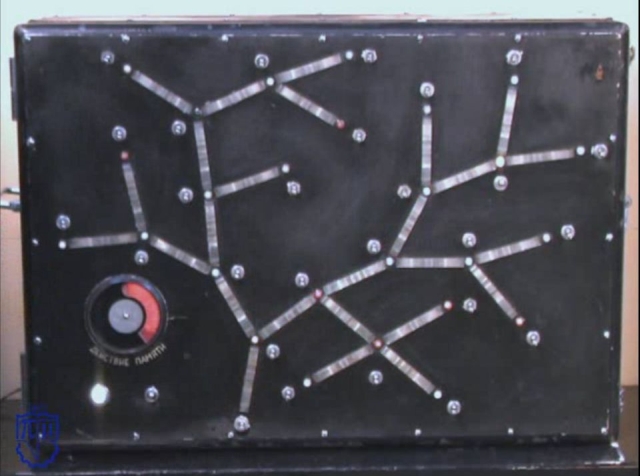
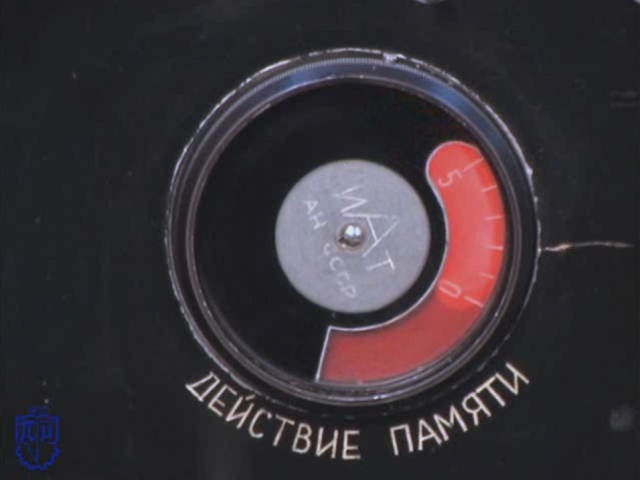
[I need a translation to describe the above component and how it works.]

Internals showing the relay memory.
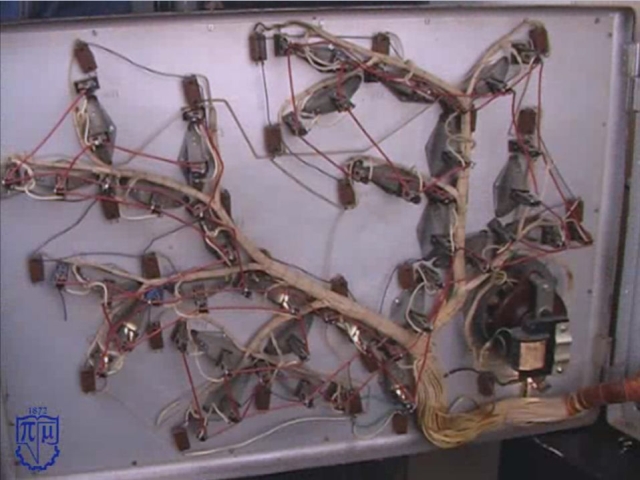
Behind the front panel whowing the wiring to the switches and lamps.
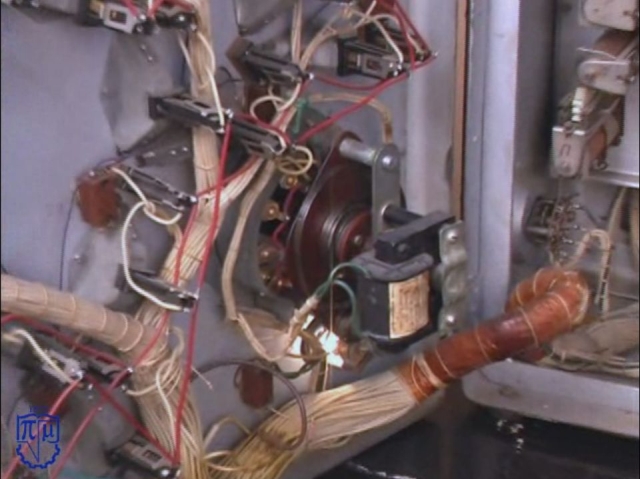
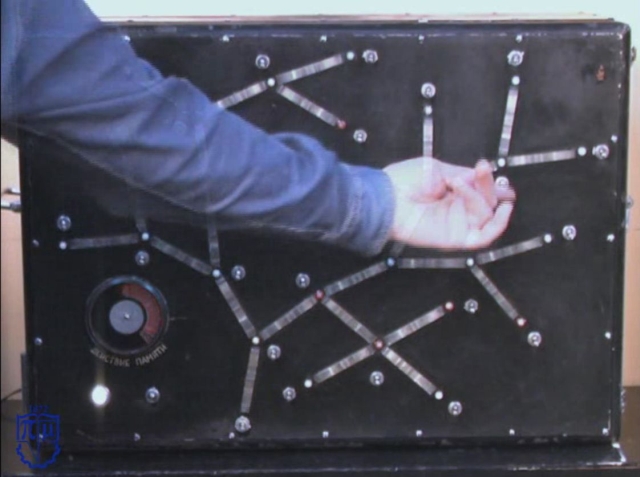
The start of the maze learning which gates are passable.

This switch is the start position of the maze.
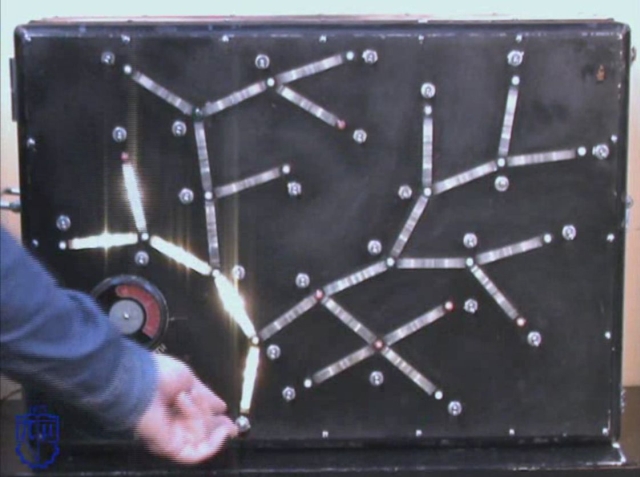
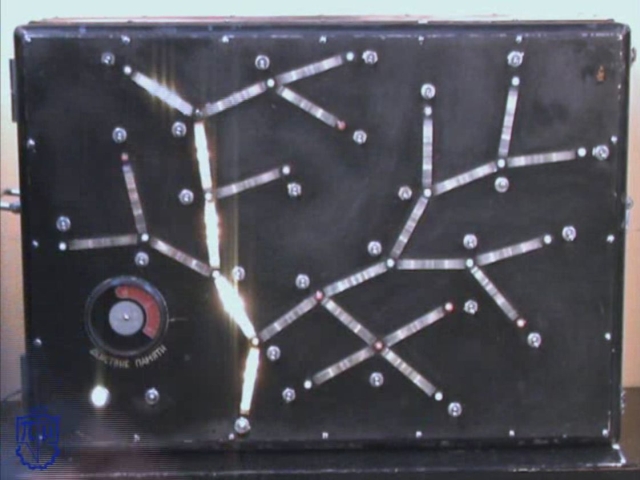
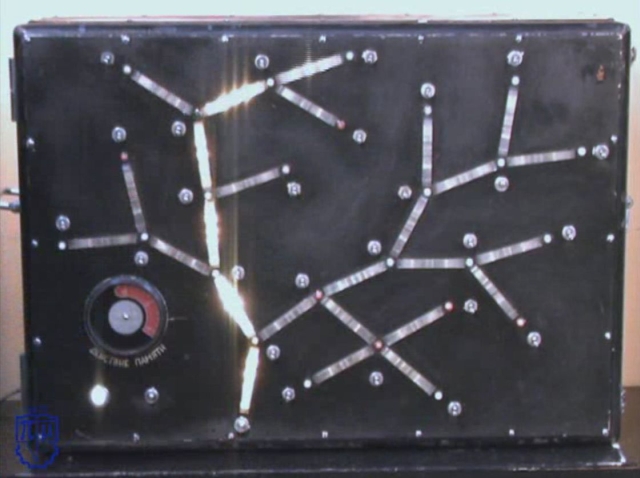
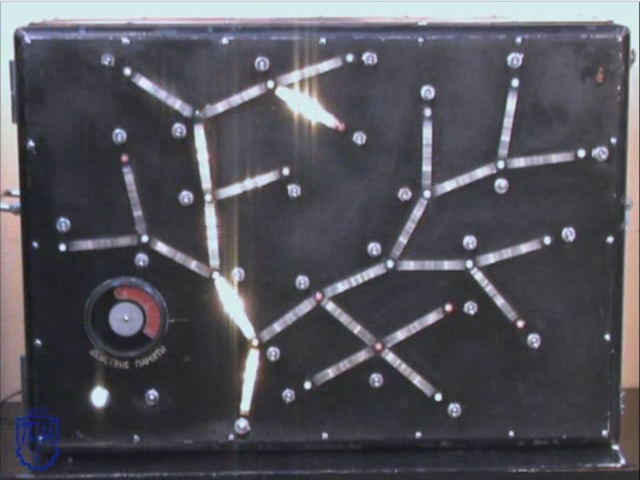
.jpg)

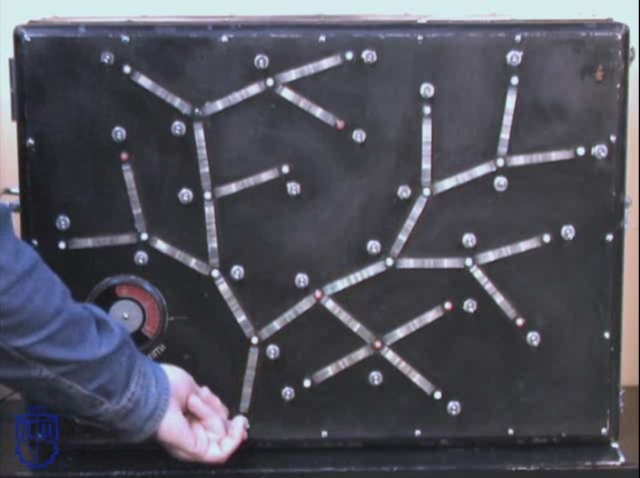
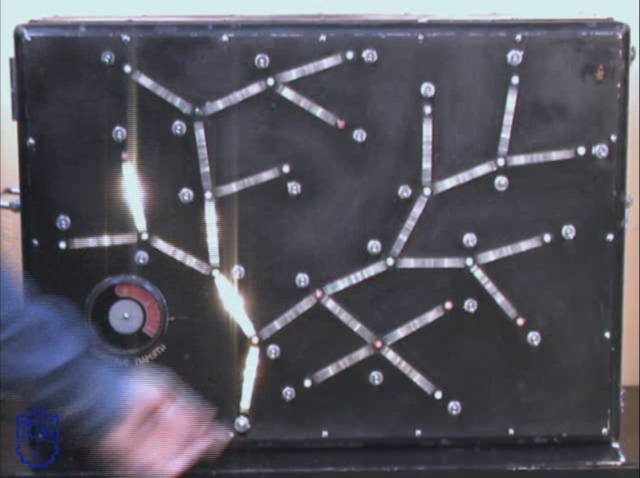

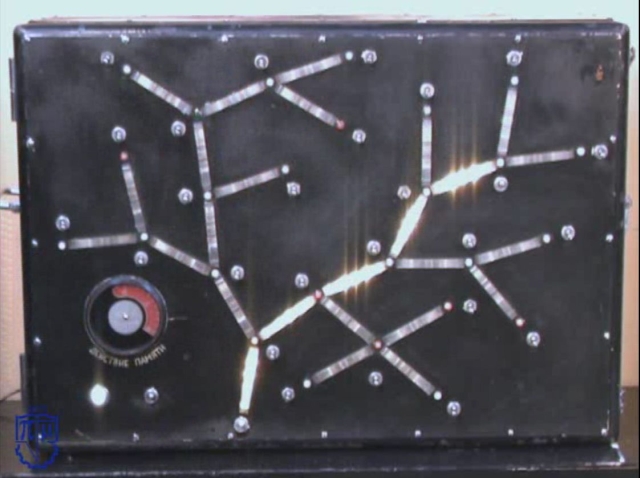
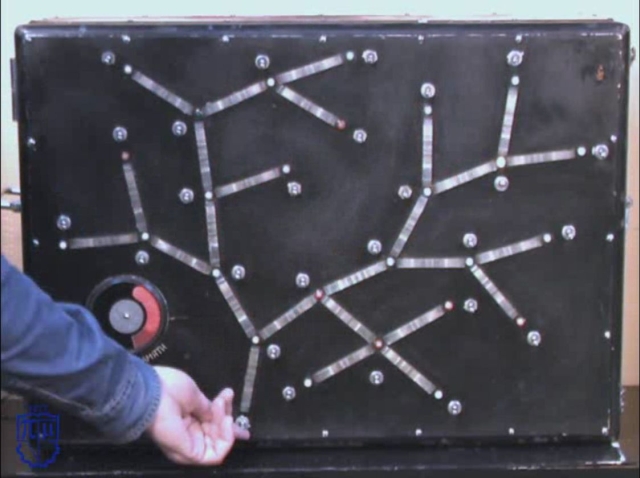
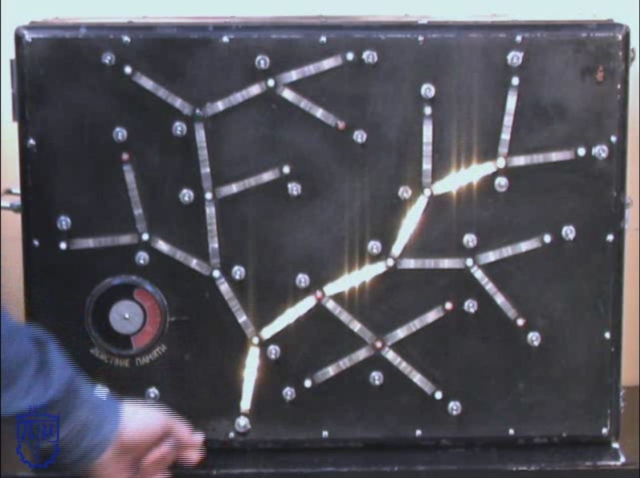
Labyrinth
Labyrinth – a working model of a learning machine-type mouse in the maze (Fig. 13.4, b). Labyrinth has one input and eleven dead ends. Each pin has stalled – "bait" for the mouse, which here replaces the light beam.

(ris.13.4) E-maze: a – an artificial mouse "Theseus", b – light-maze (1 – the first call, 2 – follow-up visits. C – Start, F – Finish, A – "memory", in – circuit breaker)
Principle of
Principle of action. The closure of the switch "Request" and pressing "Search" (Figure 13.5) leads to the fact that the ray of light "rounds" all the corridors and dead ends, until you reach the place where we placed a "bait". Search stops. Last impasse remains lit. If we disconnect switch "request", the lamp goes out, but will remain in the memory cell information about the shortest path from the entrance to the impasse with the "bait". Time of storage of information in memory is 30 seconds. During this time, mice can get to "bait", avoiding unnecessary deadlocks. If within 30 seconds the machine will not get repeated requests, it "forgets" has studied the way and it all starts again.
If you try to deceive the mouse and put "bait" in any of the nests, then after the command "Search" light beam obezhit entire maze and stop. At the same time spreads the inscription "The Labyrinth is empty. Within half a minute can be any number of times lock switch "request", and despite this, the light beam will remain stationary. Only 30 to go off control lamp "Memory", informing them that the car had forgotten "about the" deception ".
While searching for ways to "bait" the light beam is delayed by 2 s in each transition. When the path of "known", he has only half a second to the entrance to get to "bait". Knowing the way, the mouse runs faster.
The device consists of a time relay (storage multivibrator. Search "bait" is with a telephone selector (the seeker).
He switched with a frequency of 0.5 Hz when searching and much faster when re-run of the famous road.

(ris.13.5) Schematic diagram of the light maze
Design details and
Details and design. Telephone stepper seeker with 27 contacts, telephone relays, such as MT60 with coils (resistance 700Om), incandescent lamps 24 … 36 V. The power supply – 24 V battery or AC mains (via a rectifier). If there is a step seeker, who works at a voltage of 6 … 12 V or achieved self-powered, all other elements may be powered by batteries 4,5 … 12 V. In this case, suit miniature incandescent lamps 3,5 or 6, 3 B.
The front panel of the maze made of plywood or plastic (Figure 13.6, b). Its dimensions are 250 X 250 mm or 150 X 250 mm. The corridors of the labyrinth of normal shape (Figure 13.6, a) can be covered with frosted acrylic or white plastic. You can just put under the transparent acrylic tracing paper on which the black ink marked pattern of the labyrinth. Near the front panel of the labyrinth located switches and alarm devices. Lamps "Labyrinth is empty, you can connect the CO call or sound generator.
All the device is a small suitcase. Its front panel is connected by wires with steel ustroystvami.Esli not in the presence of 16 relays and stepper seeker for 27 contacts, should reduce the number of lanes and alleys of the labyrinth, and thus the ramifications of light paths. If there is a sufficient number of relays, and appropriate steps seeker, you can build a more complex maze.
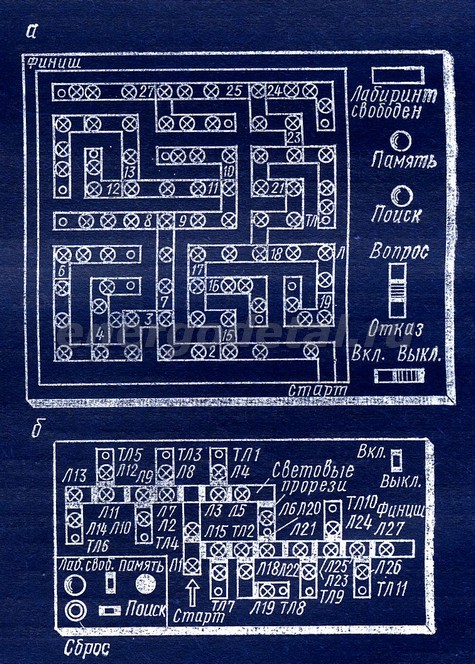
(ris.13.6) Structures of the light of the labyrinth: a – a modernized, b – Summary Labyrinth